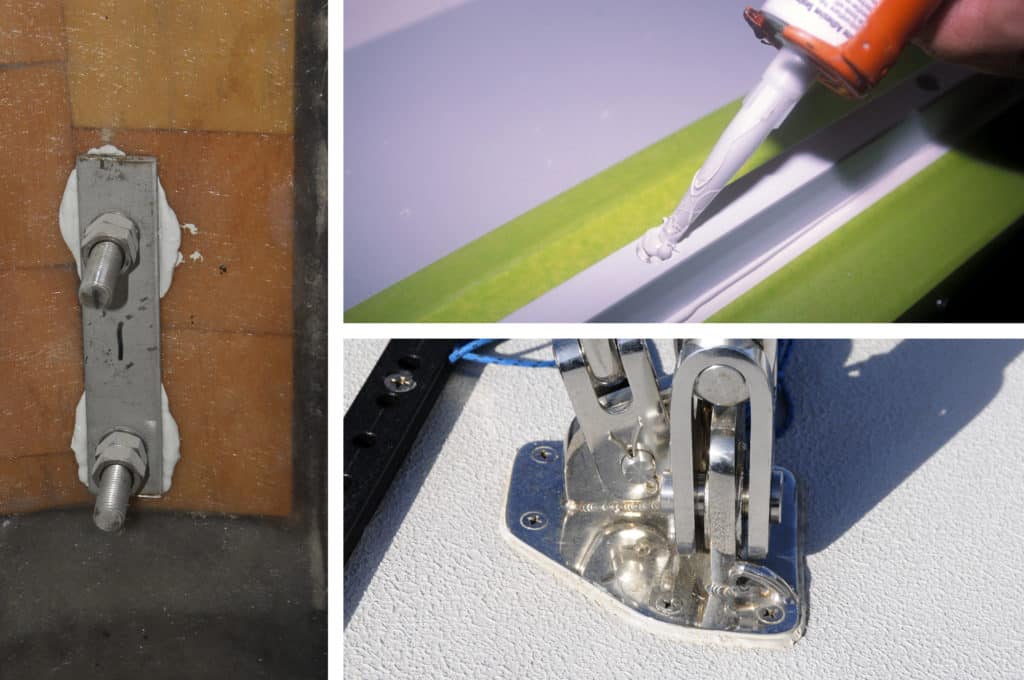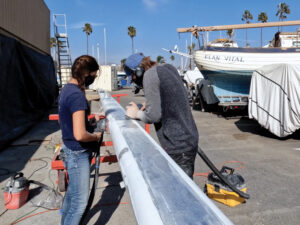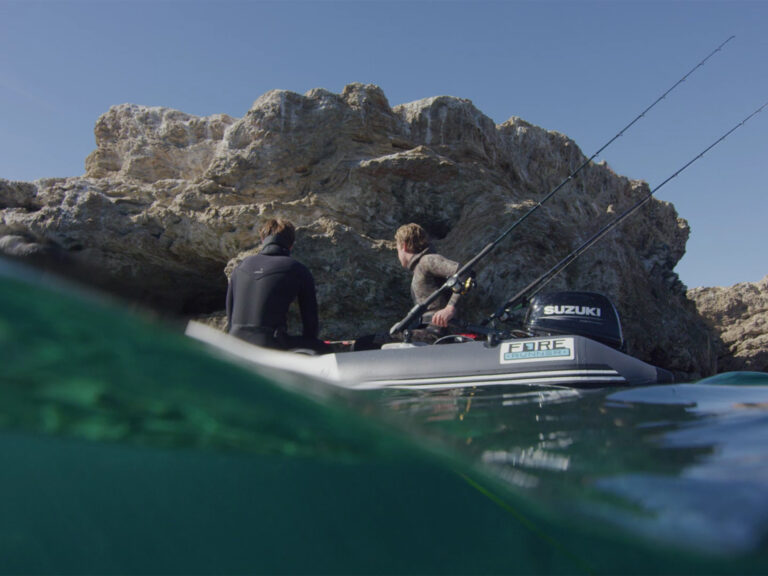
Polyurethane caulks are so versatile, readily available, and widely accepted and used that in many cases they’ve eclipsed alternative products. That’s unfortunate, because even though polyurethane caulk is terrific, there are times when other formulations, such as polysulfide or silicone, may be preferable.
I briefly mentioned polysulfide last month (see “A Refreshing Caulk Tale,” September 2016), noting some of its attributes, including resistance to UV light, fuel and many cleansers, and its facility to be sanded and painted. Above all these, however, is its ability to remain flexible for years. Unlike polyurethane, polysulfide doesn’t dry to a hard, eraser-like consistency. It’s therefore ideally suited to applications where it’s exposed to flexing or movement, UV light, deck or teak cleaners, or petroleum products. It’s also ideal for bedding antenna bases, searchlights and fuel-fill fittings that might at some point require disassembly or be exposed to certain chemicals, including fuel.
Actually, I can’t praise polysulfide caulk enough; it’s an unsung hero among marine sealants that has been overshadowed without just cause by polyurethane. For years 3M offered polysulfide sealant in a product known as 101, though it was discontinued a few years ago for lack of sales. (I still husband a small supply of 101 that I keep in my shop refrigerator, as caulk should be kept cool to extend shelf life.) Thankfully, polysulfide caulk remains available from other manufacturers.
When choosing between polyurethane and polysulfide, ask yourself whether you’ll need to disassemble the object at hand (at least during your ownership) or if you require an adhesive. If the respective answers are “I might” and “no,” consider polysulfide. To be clear, polyurethane remains well suited to permanent and semipermanent installations such as hull-to-deck joints, through-hull fittings, struts and external keel attachments.
There is one caveat where polysulfide (and in some cases, polyurethane) sealant is concerned: It can be harmful to certain plastics, including ABS, PVC, acrylic (commonly known as Plexiglas) and polycarbonate (also known as Lexan). However, nylon, Delrin and other reinforced plastics, from which ABYC-compliant through-hull fittings and seacocks are made, are generally unaffected. Obviously, read the directions before using either polysulfide or polyurethane sealant on any plastic.
Silicone has a less-than-enviable reputation in the marine industry, and that too is somewhat undeserved. Several years ago I faced a vexing problem with deck-hatch leaks aboard vessels over which I was supervising construction. Regardless of the sealant used or the meticulousness of the preparation, leaks always appeared. I figured I had nothing to lose by trying an industrial silicone sealant manufactured by GE called SilPruf. Voilà, no more leaks, and I was sold thereafter.
With all sealants, there are pros and cons. While silicone is safe for use on plastics, it lacks the durability for use below the waterline. Silicone’s most lamented quality is that it cannot be painted. That means that any residue left behind will drive painters and varnishers crazy by producing the dreaded “fisheye” oval defects in coatings that are repelled by silicone. How long does the contamination last? About five years ago, I re-bedded a Cyclops light using silicone on the back of one of my nongaraged cars, and to this day water beads in the area around the lens. If you opt to use silicone, be especially careful about contamination.
Next month we’ll continue the sealant conversation by discussing approaches for surface preparation and cleanup.
Steve D’Antonio offers services for boat owners and buyers through Steve D’Antonio Marine Consulting (stevedmarineconsulting.com).








